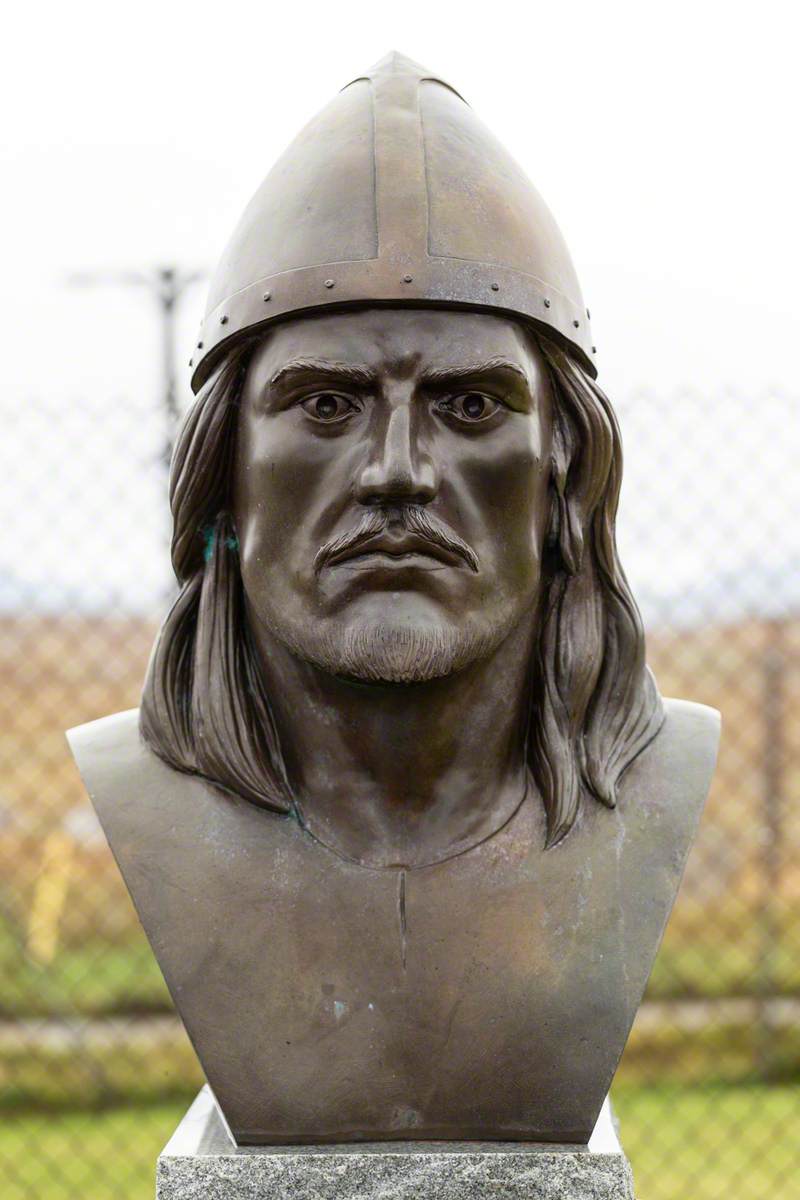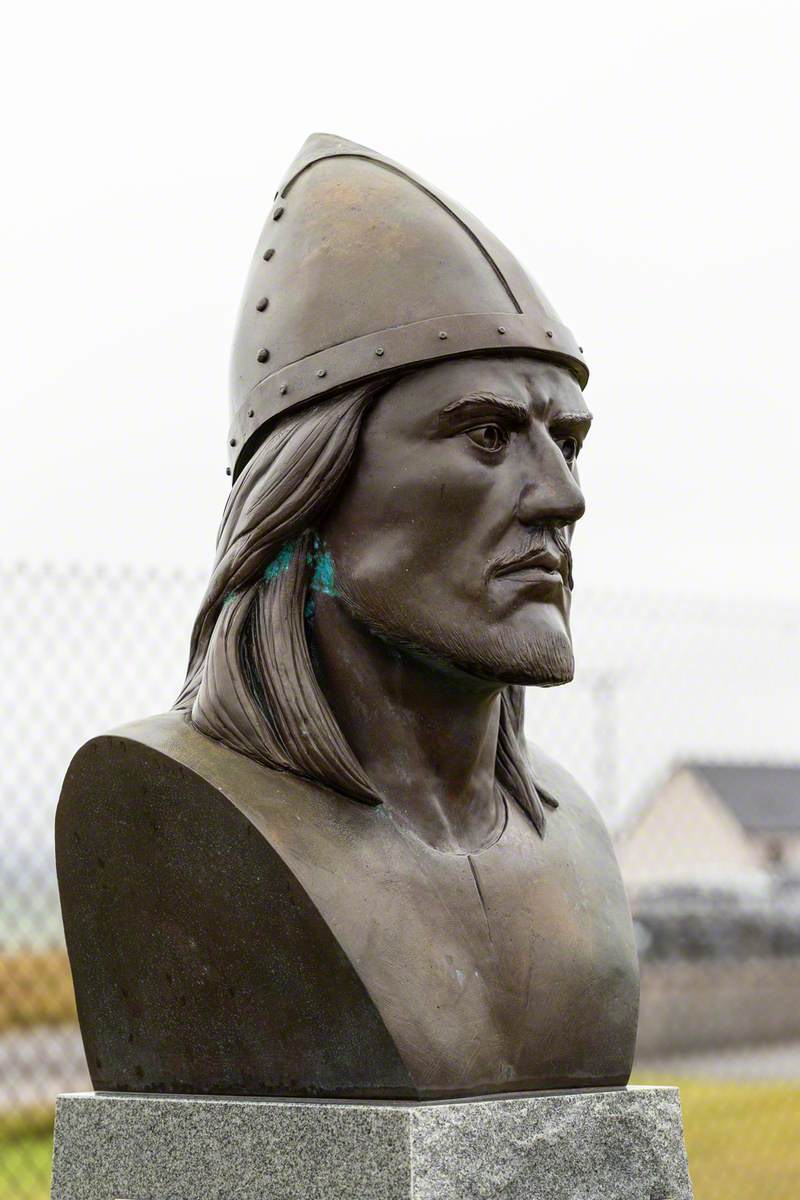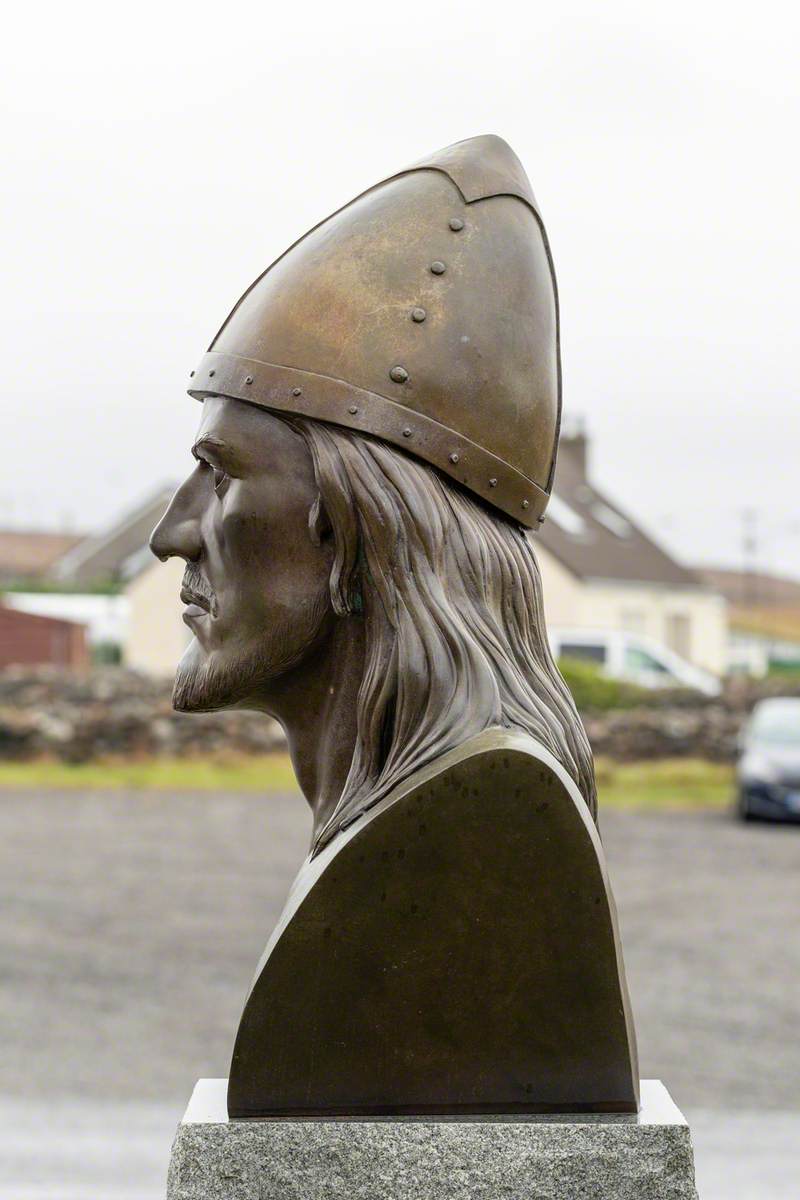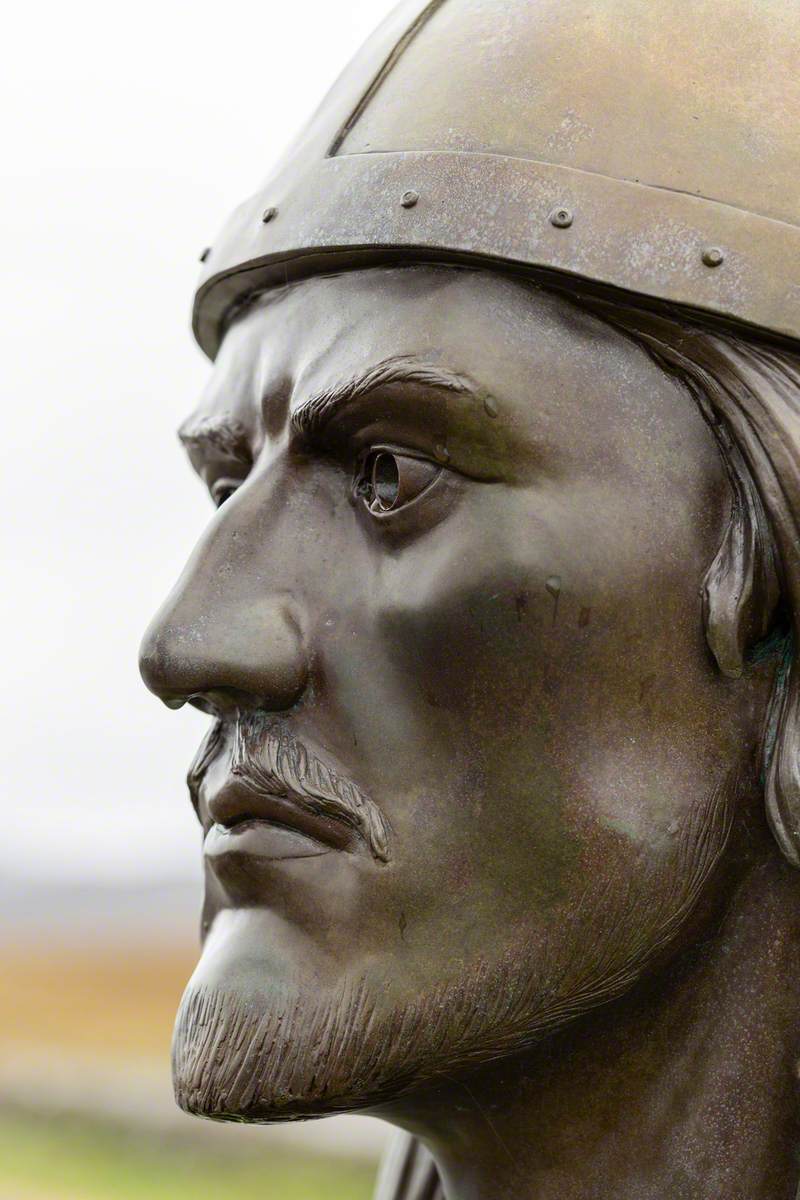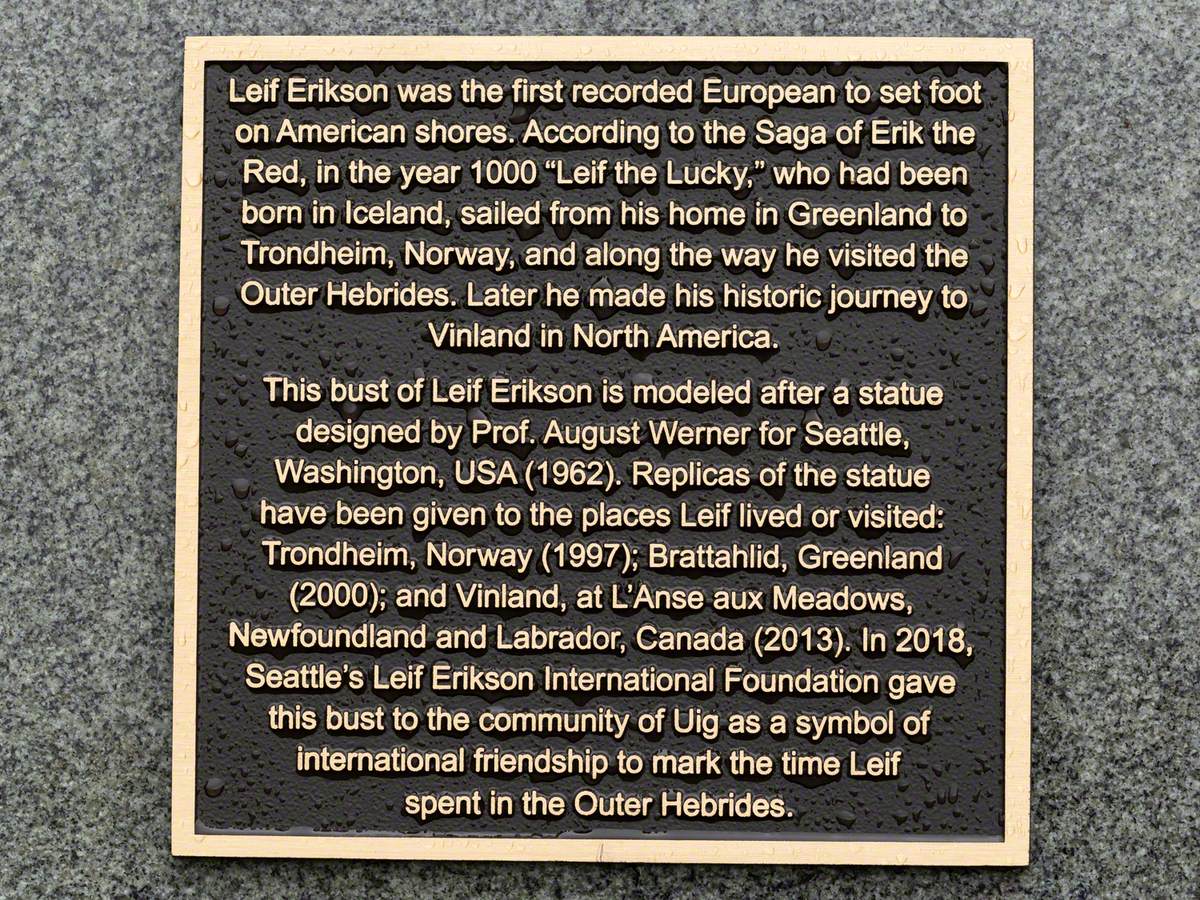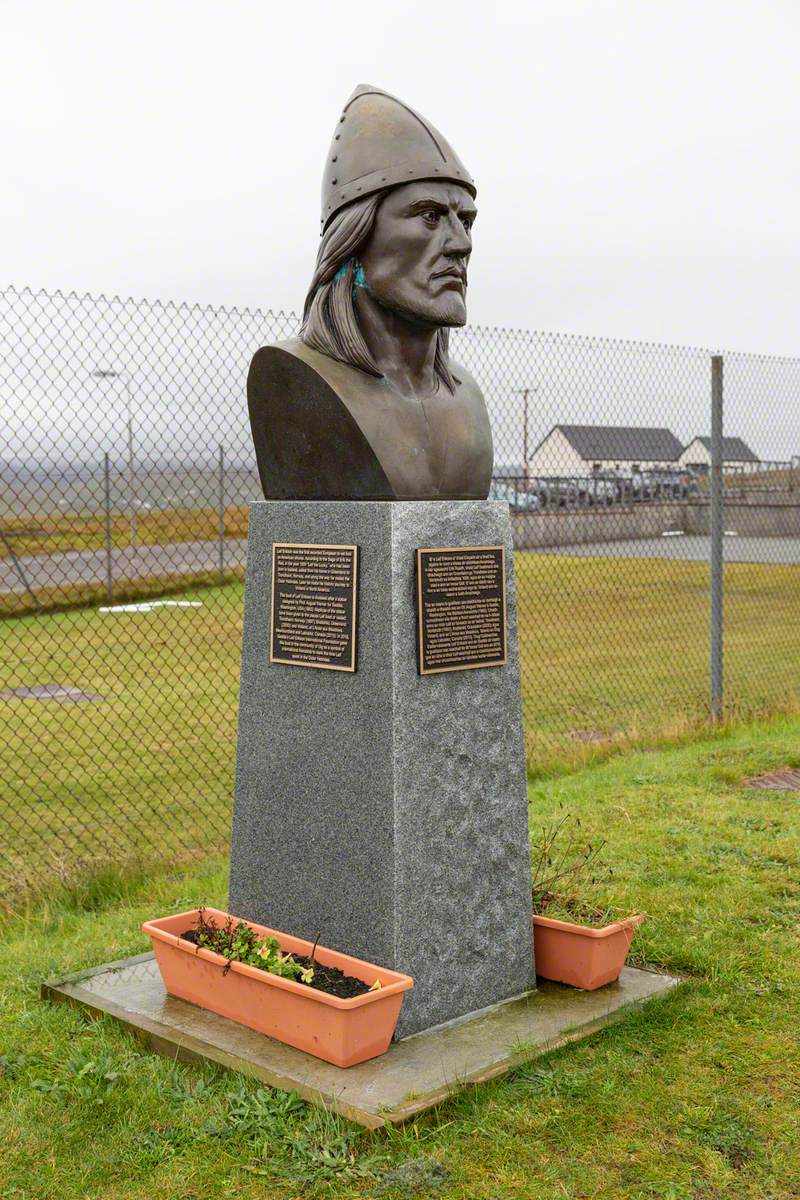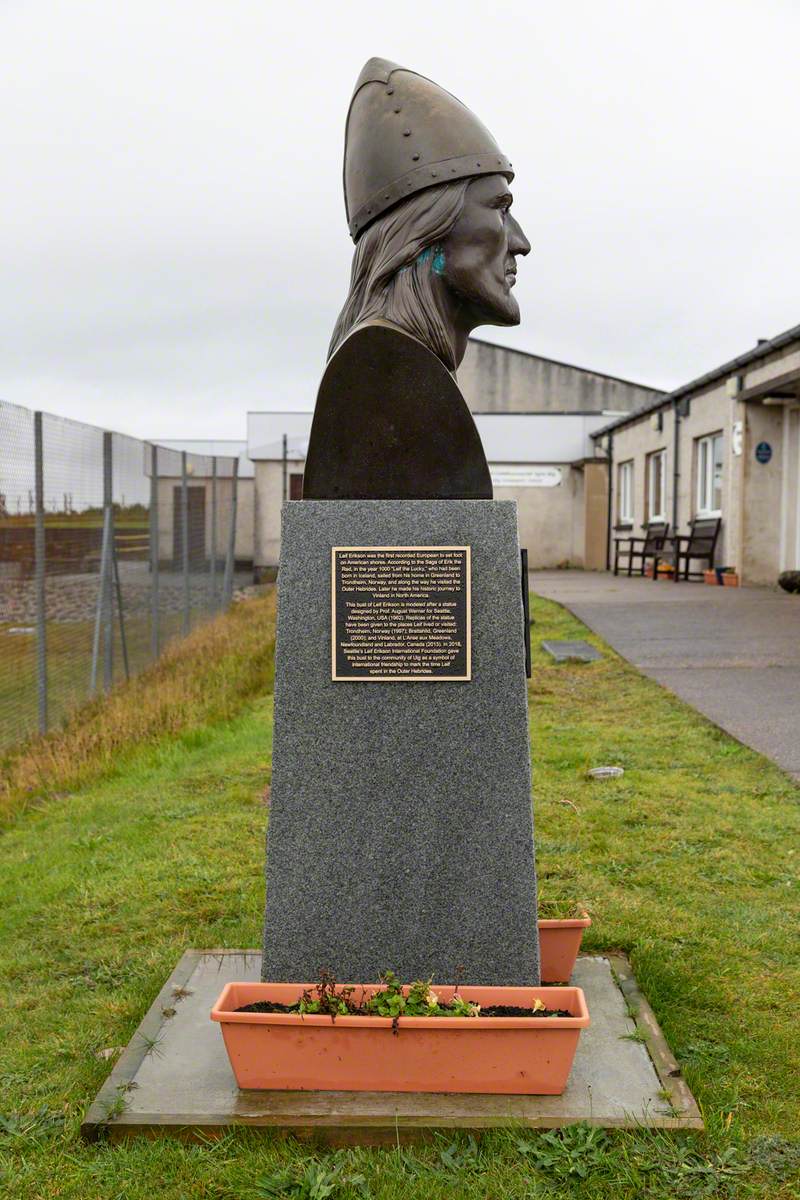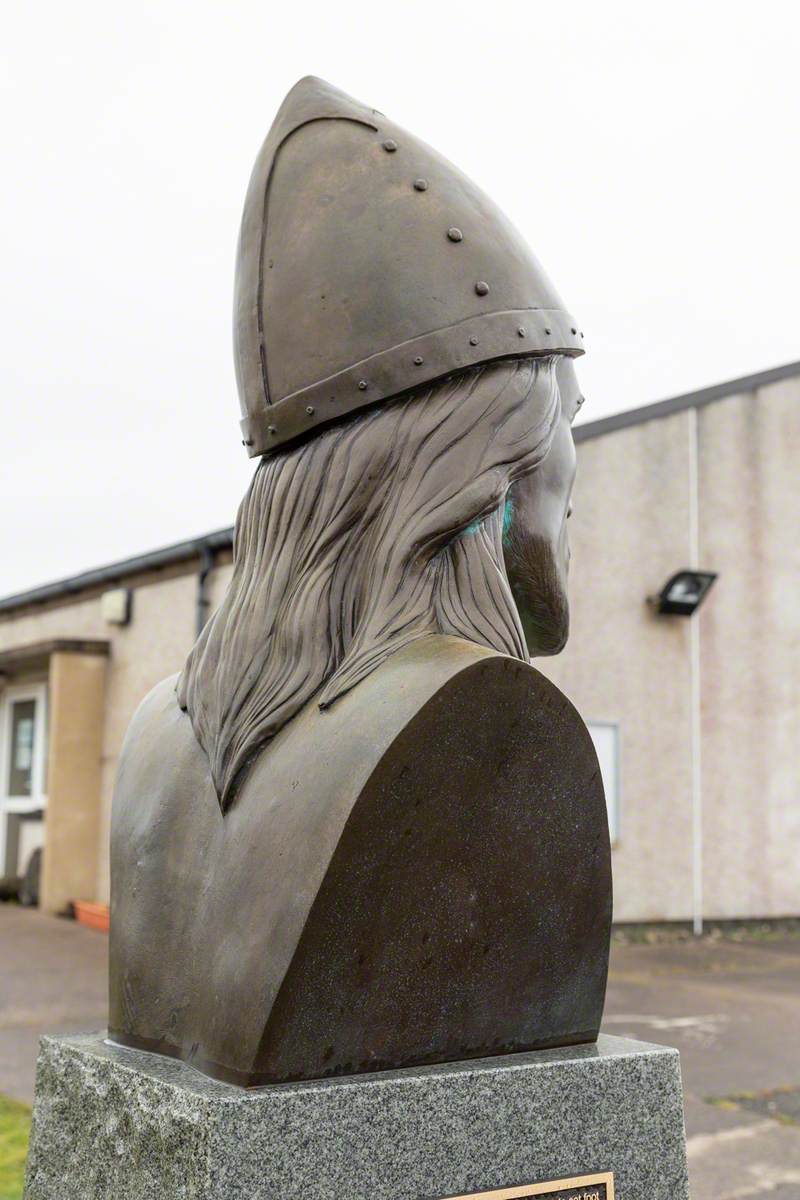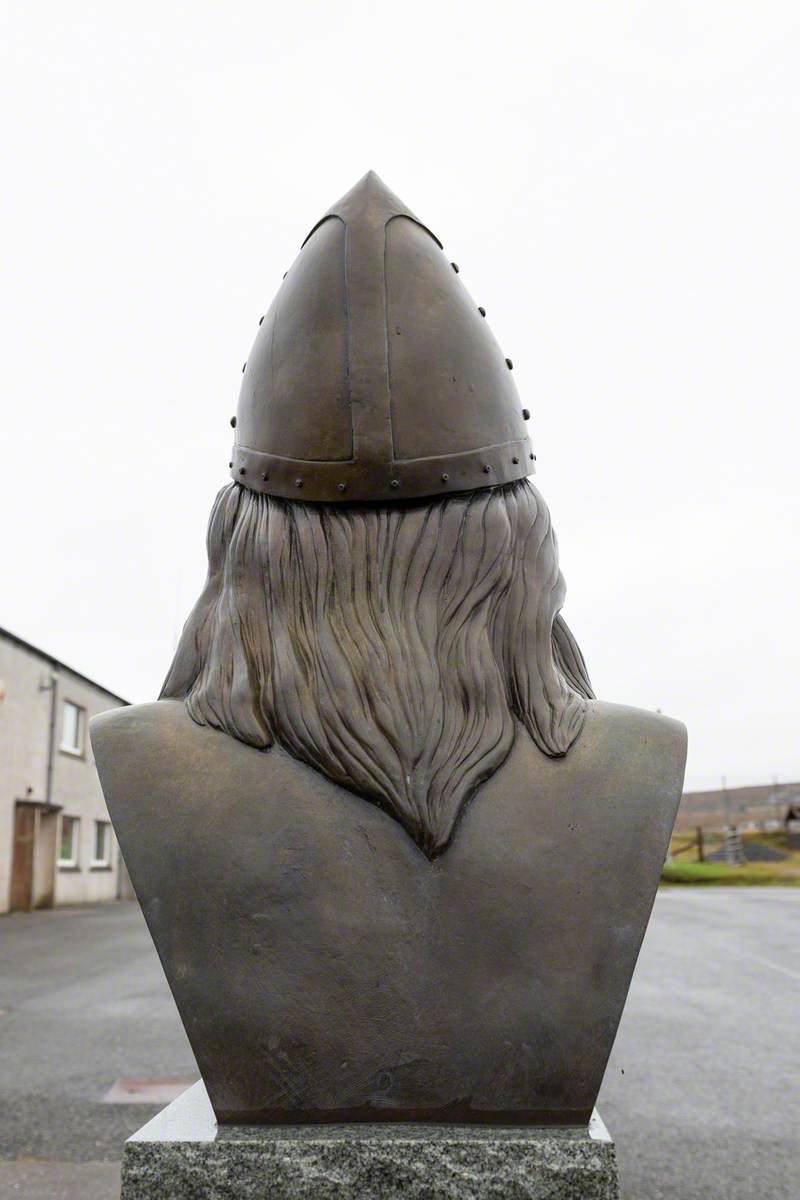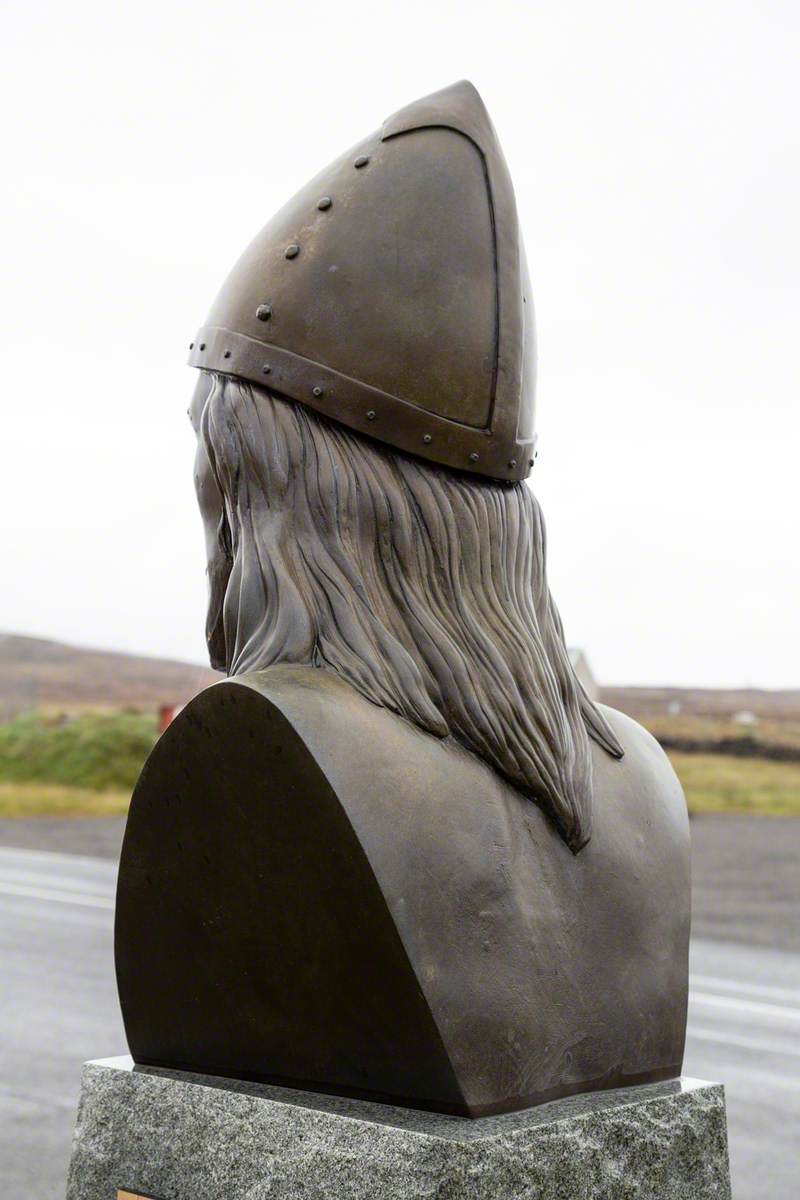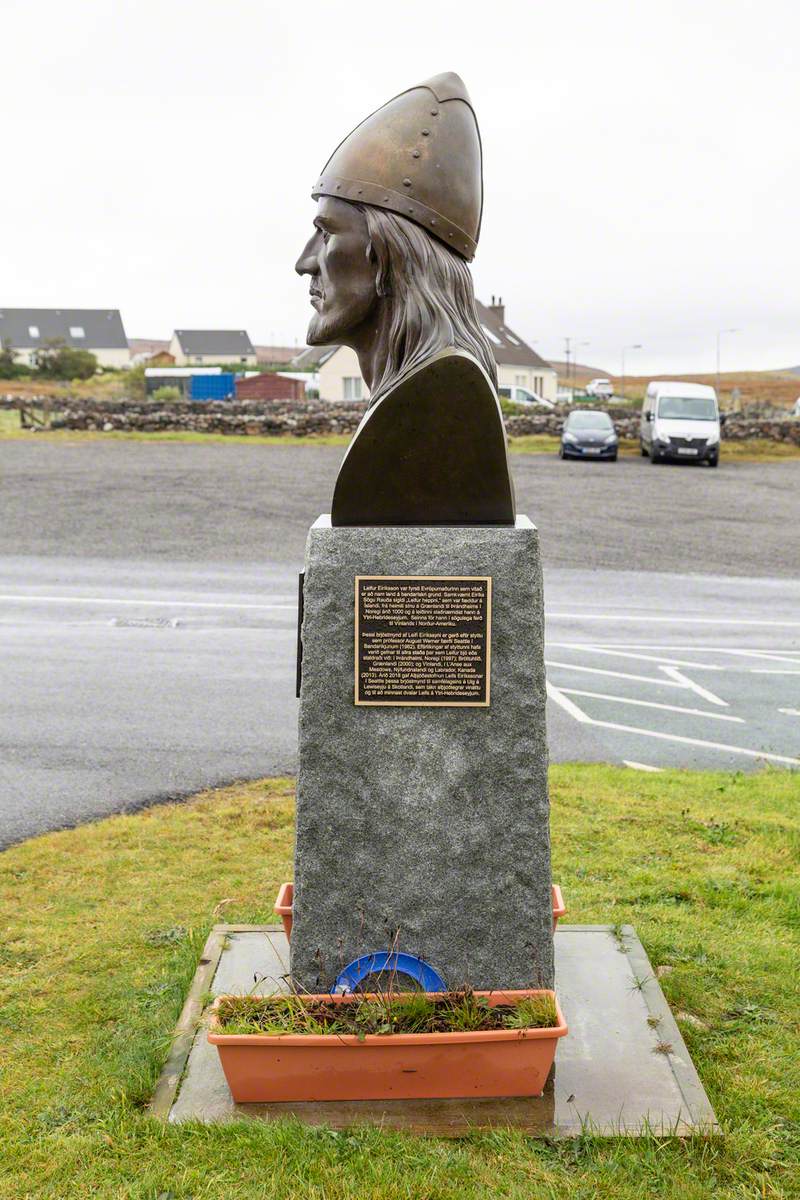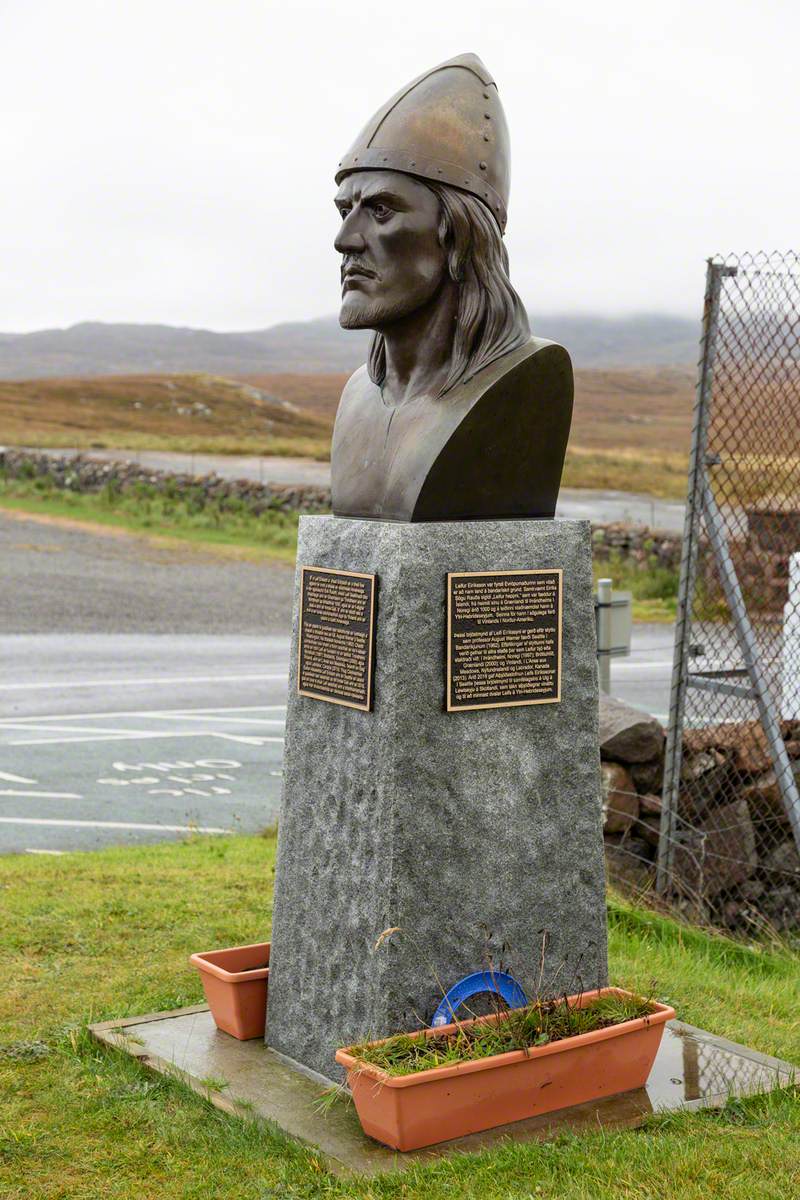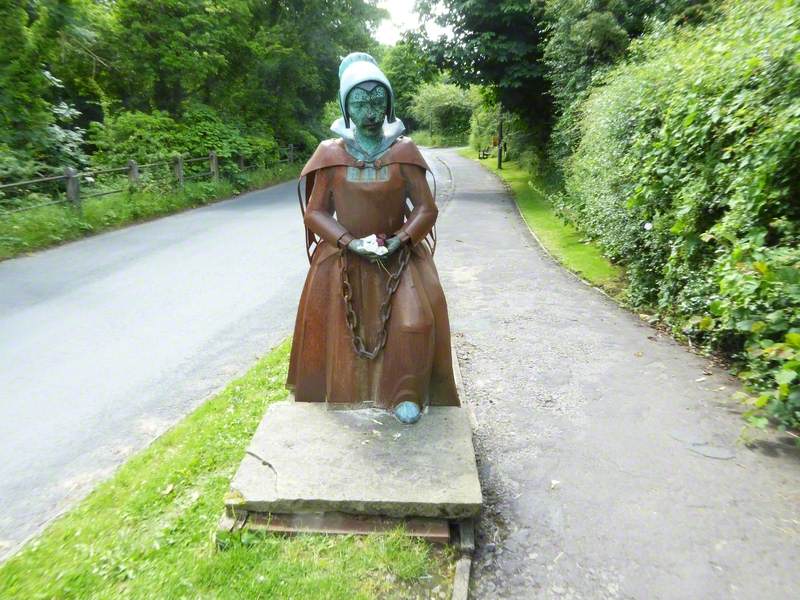How you can use this image
This image can be used for non-commercial research or private study purposes, and other UK exceptions to copyright permitted to users based in the United Kingdom under the Copyright, Designs and Patents Act 1988, as amended and revised. Any other type of use will need to be cleared with the rights holder(s).
Review the copyright credit lines that are located underneath the image, as these indicate who manages the copyright (©) within the artwork, and the photographic rights within the image.
The collection that owns the artwork may have more information on their own website about permitted uses and image licensing options.
Review our guidance pages which explain how you can reuse images, how to credit an image and how to find images in the public domain or with a Creative Commons licence available.
Notes
Add or edit a note on this artwork that only you can see. You can find notes again by going to the ‘Notes’ section of your account.
Title
Leif Eriksson (c.970–c.1020)
Medium
metal
Measurements
H 60 x W 40 x D 30 cm (E);
Plinth: H 120 x W 30 x D 30 cm (E)
Accession number
HS2_DO_S134
Acquisition method
gifted by the Leif Erikson International Foundation
Work type
Bust
Owner
Comhairle nan Eilean Siar
Custodian
Comhairle nan Eilean Siar
Work status
extant
Unveiling date
2018
Access
at all times
Inscription description
plaque. front (Gaelic): B'e Leif Erikson a' chiad Eòrpach air a bheil fios / againn le cinnt a sheas air slèibhtean Ameireaga. / A rèir sgeulachd Erik Ruadh, sheòl Leif Sealbhach bho / dhachaigh ann an Graonlainn gu Trondheim ann an / Nirribhidh sa bhliadhna 1000, agus air an t-slighe / stad e ann an Innse Gall. B' ann an dèidh seo a / rinn e an turas eachdraidheil aige do Vinland ann an / ceann a tuath Ameireaga. / Tha an ceann is guaillean seo stèidhichte air ìomhaigh a / chaidh a dhealbh leis an Oll. August Werner à Seattle, / Washington, Na Stàitean Aonaichte (1962). Chaidh / cumaidhean eile dheth a thoirt seachad do na h-àitean / anns an robh Leif air fuireach no air tadhal: Trondheim, / Nirribhidh (1997); Brattahild, Graonlainn (2000); agus / Vinland, ann an L'Anse aux Meadows, Talamh an Èisg / agus Labrador, Canada (2013). Thug Caidreachas / Eadar-nàiseanta Leif Erikson ann an Seattle an ceann / is guaillean seo seachad do dh'Innse Gall ann an 2018, / gus an ùine a chuir Leif seachad ann a chomharrachadh, / agus mar shuaicheantas air càirdeas eadar-nàiseanta.; plaque, left side (English): Leif Erikson was the first recorded European to set foot / on American shores. According to the Saga of Erik the / Red, in the year 1000 "Leif the Lucky," who had been / born in Iceland, sailed from his home in Greenland to / Trondheim, Norway, and along the way he visited the / Outer Hebrides. Later he made his historic journey to / Vinland in North America. / This bust of Leif Erikson is modeled after a statue / designed by Prof. August Werner for Seattle, / Washington, USA (1962). Replicas of the statue / have been given to the places Leif lived or visited: / Trondheim, Norway (1997); Brattahlid, Greenland / (2000); and Vinland, at L'Anse aux Meadows, / Newfoundland and Labrador, Canada (2013). In 2018, / Seattle's Leif Erikson International Foundation gave / this bust to the community of Uig as a symbol of / international friendship to mark the time Leif / spent in the Outer Hebrides.; plaque, right side (Icelandic): Leifur Eiríksson var fyrsti Evrópumaðurinn sem vitað / er að nam land á bandarískri grund. Samkvæmt Eiríks / Sögu Rauða sigldi „Leifur heppni,“ sem var fæddur á / Islandi, frá heimili sínu á Grænlandi til Þrándheims í / Noregi árið 1000 og á leiðinni staðnæmdist hann á / Ytri-Hebrideseyjum. Seinna fór hann í sögulega ferð / til Vinlands I Norður-Ameríku. / þessi brjóstmynd af Leifi Eirikssyni er gerð eftir styttu / sem prófessor August Werner færði Seattle í / Bandaríkjunum (1962). Eftirlíkingar af styttunni hafa / verið gefnar til allra staða þar sem Leifur bjó eða / staldraði við: í þrándheimi, Noregi (1997); Bröttuhlíð, / Grænlandi (2000); og Vínlandi, í L'Anse aux / Meadows, Nýfundnalandi og Labrador, Kanada / 2013). Árið 2018 gaf Alþjóðastofnun Leifs Eiríkssonar / í Seattle þessa brjóstmynd til samfélagsins á Uig á / Lewiseyju á Skotlandi, sem tákn alþjóðlegrar vináttu / og til að minnast dvalar Leifs á Ytri-Hebrideseyjum.

